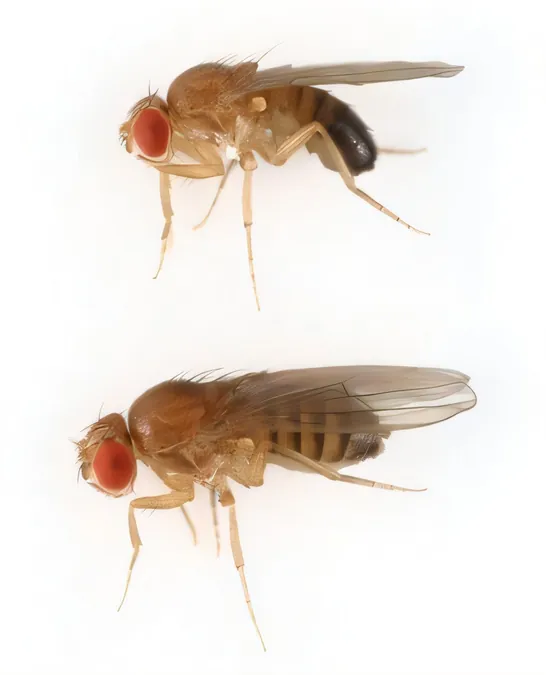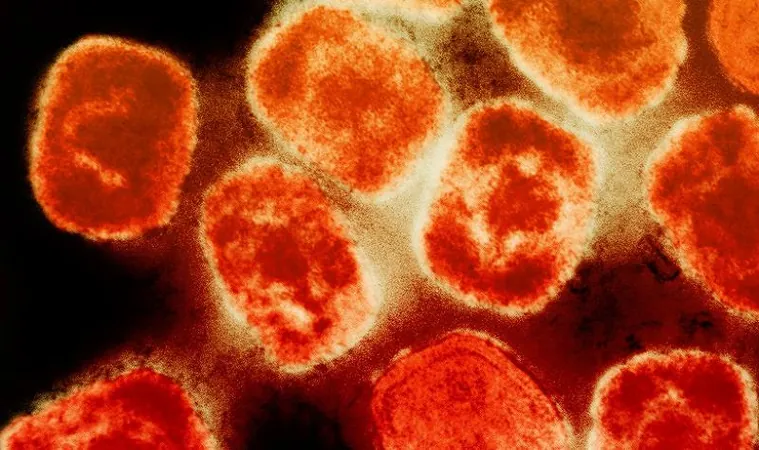
The Shocking Truth About a Hidden Virus in Fruit Flies That Could Affect Your Research Results!
2025-04-01
Author: Wei
Introduction
Researchers have unveiled a startling discovery: the Nora virus, a hidden pathogen harbored by fruit flies, has profound implications for experimental accuracy in scientific research. This groundbreaking study, published recently in eLife, sheds light on the virus-host dynamics prevalent in the Drosophila gut, serving as a crucial cautionary note for scientists utilizing fruit flies as model organisms to study gut physiology.
What is the Nora Virus?
The Nora virus primarily targets fruit flies and is recognized as an insect-specific intestinal pathogen. It frequently infects lab stocks, establishing long-term infections that often go unnoticed, as the flies exhibit mild or even no symptoms. This aspect makes the Nora virus a valuable model for investigating viral infections in insects.
Research Findings
Senior author Dominique Ferrandon, a prominent researcher at the CNRS Immune Response and Development in Insects lab in Strasbourg, France, noted a peculiar observation regarding laboratory stocks: 'We identified that different stocks of fruit flies exhibited significant discrepancies in their sensitivity to the bacterium Pseudomonas aeruginosa. The only notable difference was the presence of the Nora virus in the more vulnerable flies.' This observation prompted them to investigate the influence of persistent Nora virus infections on secondary bacterial infections.
In their experiments, the researchers discovered that flies harboring the Nora virus exhibited a staggering threefold increase in gut stem cell growth compared to their virus-free counterparts, indicating that these infected flies were more susceptible to bacterial invaders. Remarkably, flies that underwent treatments to eliminate the virus regained their normal lifespan and demonstrated reduced vulnerability to bacterial infections.
In intriguing experiments, virus-negative flies that were housed in tubes previously occupied by Nora virus-infected flies quickly succumbed to infection, demonstrating a rapid transmission of the virus. Flies exposed to purified Nora virus also displayed heightened susceptibility to P. aeruginosa, resulting in significantly shorter lifespans than those free of the virus.
Impact of Diet and Age
Despite previous knowledge that both diet and microbiome could influence gut infections, the researchers found that those fed a rich diet—enriched with additional yeast—showed an increased load of the Nora virus after exposure to P. aeruginosa infections, leading to quicker mortality. However, the microbiome alone did not fully explain the observed variations, hinting at other underlying factors affecting the interactions.
Fascinatingly, older flies, aged 30 to 35 days, exhibited a fourfold increase in Nora virus burden compared to their younger counterparts aged 3 to 5 days. This trend correlated with heightened gut stem cell division rates, suggesting that as flies age, their gut microbiome becomes dysregulated, compromising their intestinal barriers and increasing susceptibility to infections.
Mechanism of Infection
Further investigations revealed that P. aeruginosa was more adept at crossing the intestinal barrier in Nora virus-positive flies. This phenomenon was accompanied by evidence of immune responses triggered by the presence of the virus. The researchers used antibodies to track the virus within intestinal cells and uncovered that the Nora virus predominantly infects gut stem cells, remaining latent until stressors—such as bacterial infections—reactivate it. Consequently, this reactivation leads to increased viral reproduction within the intestinal lining, exacerbating intestinal damage and further reducing the lifespan of the infected flies.
Conclusion
The lead author, Adrien Franchet, now a postdoctoral scientist at the Francis Crick Institute in London, concluded, 'Our study highlights a concerning pattern of low-level Nora virus infections in young fruit flies that can be exacerbated by factors such as age, nutritional intake, and gut infections. These results underscore the potential for intestinal viruses to confound research on aging and gut biology, as well as any studies monitoring fruit fly survival beyond eight days.'
Implications for Future Research
Stay informed! This surprising revelation about the Nora virus could transform how scientists approach their research on fruit flies and potentially reshape our understanding of gut health in a variety of organisms. Don't miss out on what this could mean for the future of biological research!



 Brasil (PT)
Brasil (PT)
 Canada (EN)
Canada (EN)
 Chile (ES)
Chile (ES)
 Česko (CS)
Česko (CS)
 대한민국 (KO)
대한민국 (KO)
 España (ES)
España (ES)
 France (FR)
France (FR)
 Hong Kong (EN)
Hong Kong (EN)
 Italia (IT)
Italia (IT)
 日本 (JA)
日本 (JA)
 Magyarország (HU)
Magyarország (HU)
 Norge (NO)
Norge (NO)
 Polska (PL)
Polska (PL)
 Schweiz (DE)
Schweiz (DE)
 Singapore (EN)
Singapore (EN)
 Sverige (SV)
Sverige (SV)
 Suomi (FI)
Suomi (FI)
 Türkiye (TR)
Türkiye (TR)
 الإمارات العربية المتحدة (AR)
الإمارات العربية المتحدة (AR)